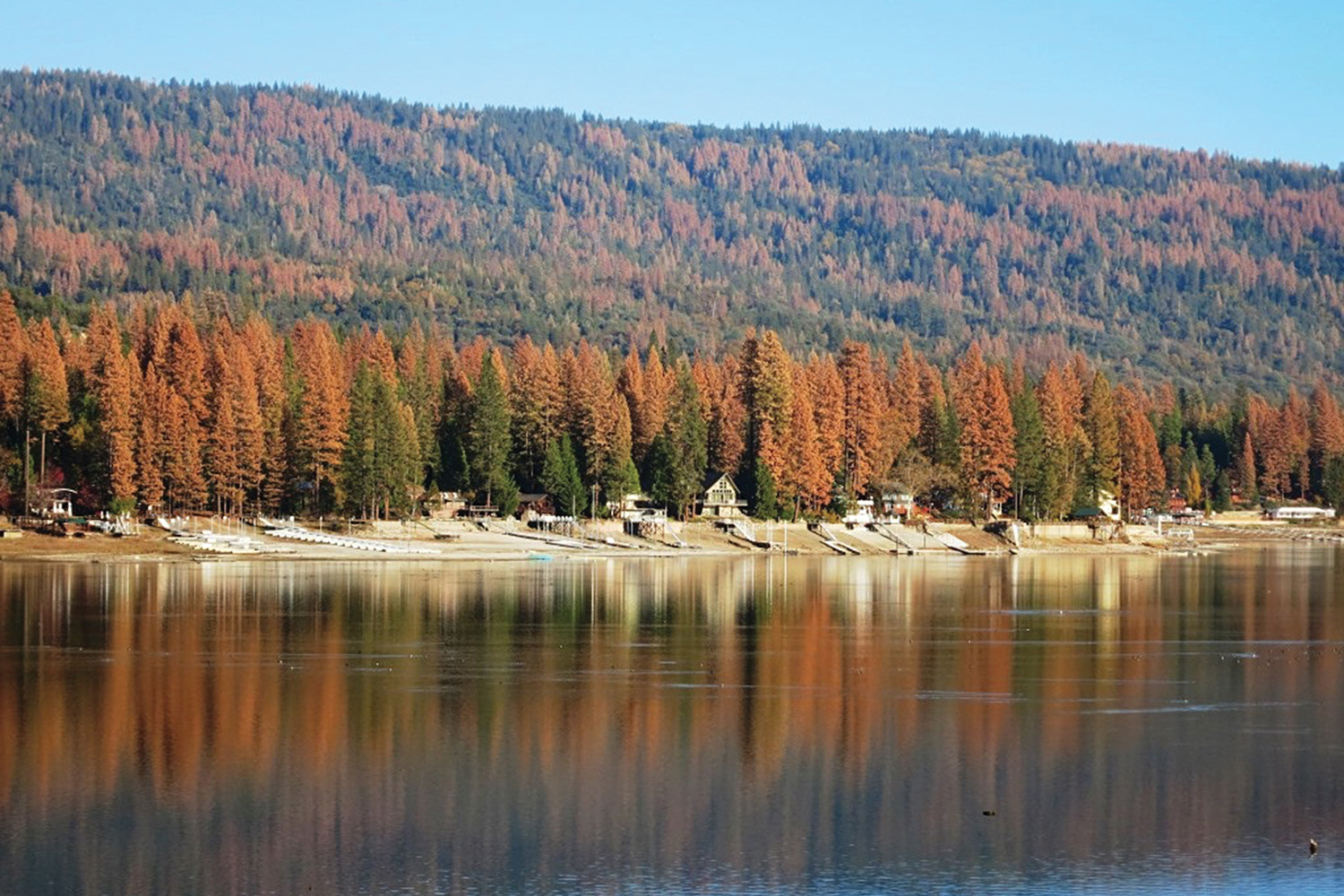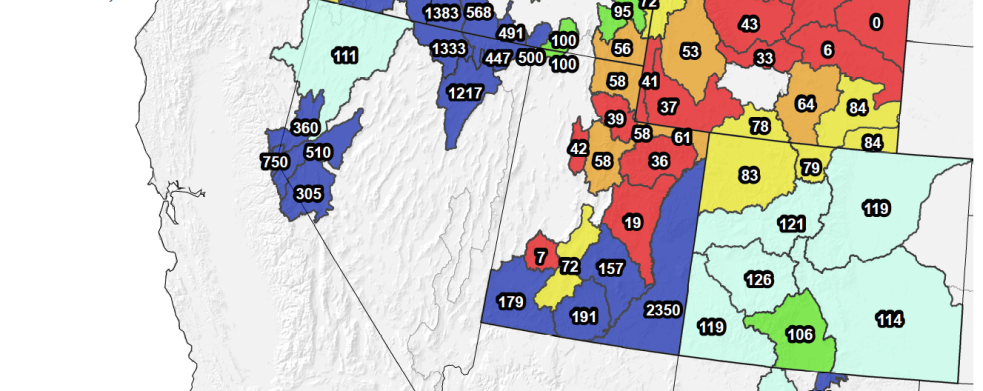
Tree mortality at Bass Lake, Sierra National Forest
Credit: U.S. Forest Service
In the Sierra Nevada mountain region of California, the customary green vista associated with a healthy forest has been usurped by a deathly reddish-brown hue. According to the US Forest Service a staggering 66 million trees have died since 2010, with more than a third in the past year alone. The death toll has risen sharply due to years of drought and an ever-increasing population of bark beetles. These pesky, hole-boring, eating machines have taken full advantage of the trees’ vulnerability. The result is a huge swath of land infested with an upsurge in bark beetles and millions of dead trees.
“Nobody imagined this would come on as fast as it has, or be as lethal,” says Craig Thomas, conservation director for Sierra Forest Legacy, a coalition focused on Sierra Nevada national forest issues. “And nobody really knows what the hell to do.”

Credit: Gregory Asner/Carnegie Institute for Science
Historically, the go-to strategy would be to fire up the chainsaws and remove all the dead trees. In populated areas or those near power lines, it’s still the industry standard. Top government officials including the governor of California, Jerry Brown and Tom Vilsak, U.S. Agriculture Secretary, side with the belief that logging will preempt the risk of catastrophic wildfires. But when the area of destruction covers over 6 million acres, scientists are saying not so fast. After all, those millions of felled trees need to be disposed of, creating a whole new set of problems. Think greenhouse gases. Not to mention the risk to the ecosystems of the remaining plant and wildlife.

Credit: sfchronicle.com
On the other side of the aisle scientists, conservationists, and community leaders are reassessing the best course of treatment for these ravaged trees as Jane Little writes in High Country News http://hcn.org . As mentioned in her article, some researchers are suggesting that dead trees can even reduce fire risks. In other words, insect damaged trees may actually reduce burn severity. The debate over the most effective and environmentally healthy approach to this ever-growing issue of die-off in the forests will no doubt continue.
One thing is for certain; dealing with a future of changing climate will require the focus on forest management to change with it.





https://www2.gov.bc.ca/assets/gov/farming-natural-resources-and-industry/forestry/forest-health/bark-beetles/bark_beetle_management_guidebook.pdf
StrategiesThere are six strategies that can be used to address bark beetle infestations. Selection of the relevant strategy is based on the extent and distribution of beetle infestations in an area. Strategy selection must also consider resource management objectives and the expected impact of the beetle in adjacent management areas. The selected strategy will define which treatment combinations are most appropriate and the intensity and frequency of their application. A combination of strategies is possible within different sub-units.
The six strategies are:
1.Prevention (long-term)
2.Suppression
3.Maintain low
4.Holding action
5.Salvage
6.Abandon (no control)
The strategy chosen should remain in place for as long as the objectives are being met or until additional resources become available to allow a more aggressive strategy to be implemented. However, situations change from year to year and therefore strategies must be reassessed on an annual basis. The most technically correct strategy may not always be selected since other criteria can override technical considerations.